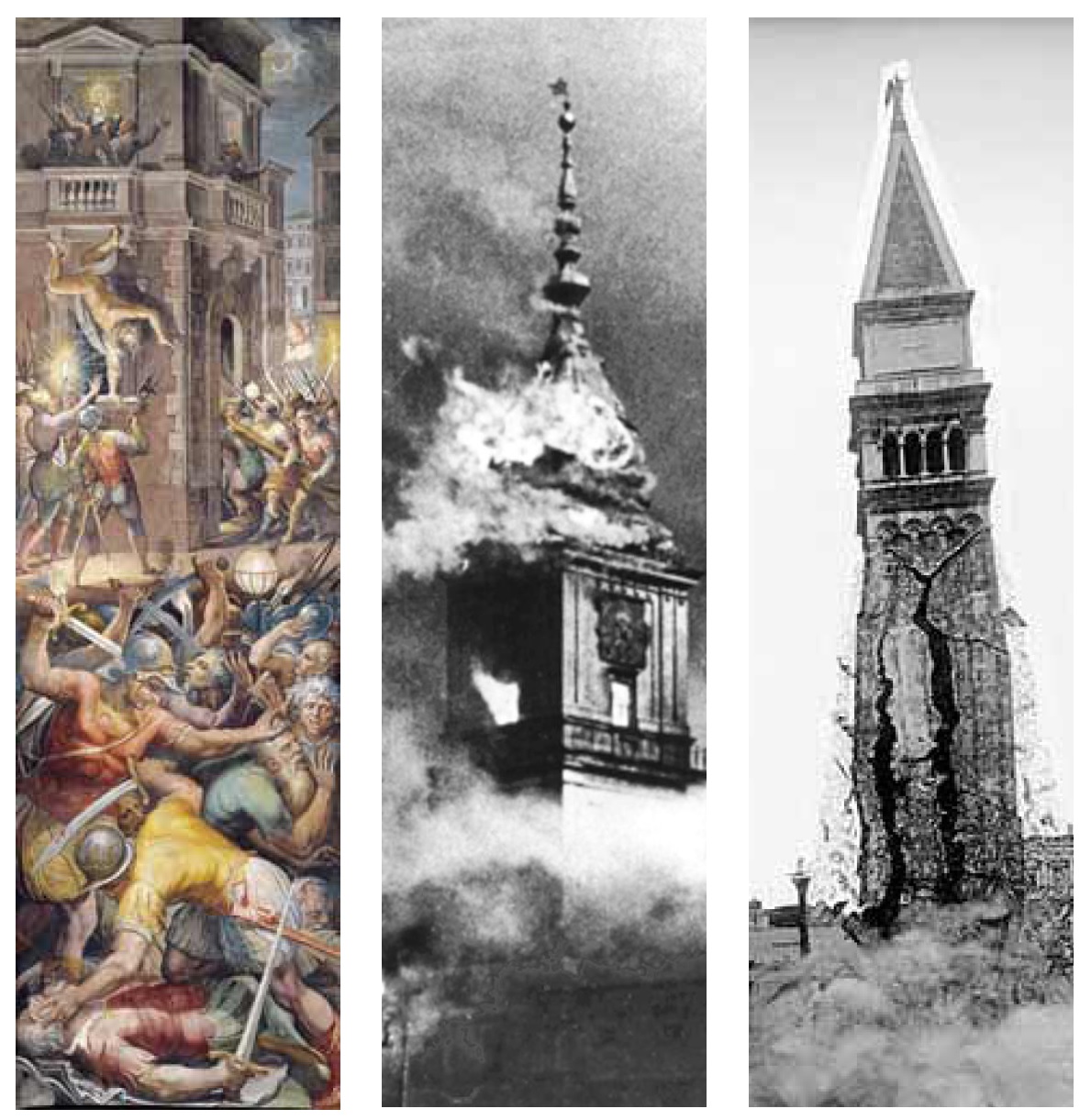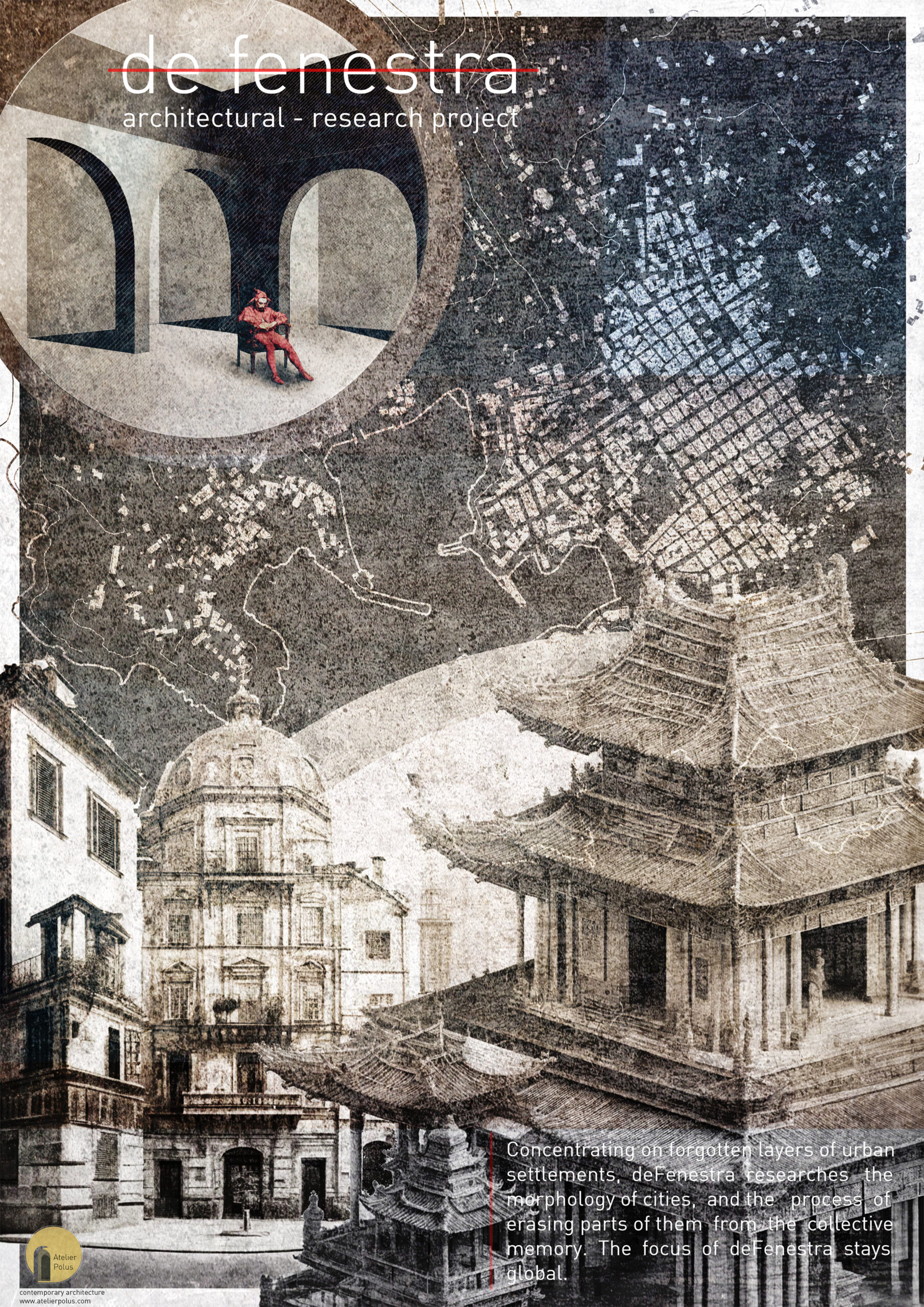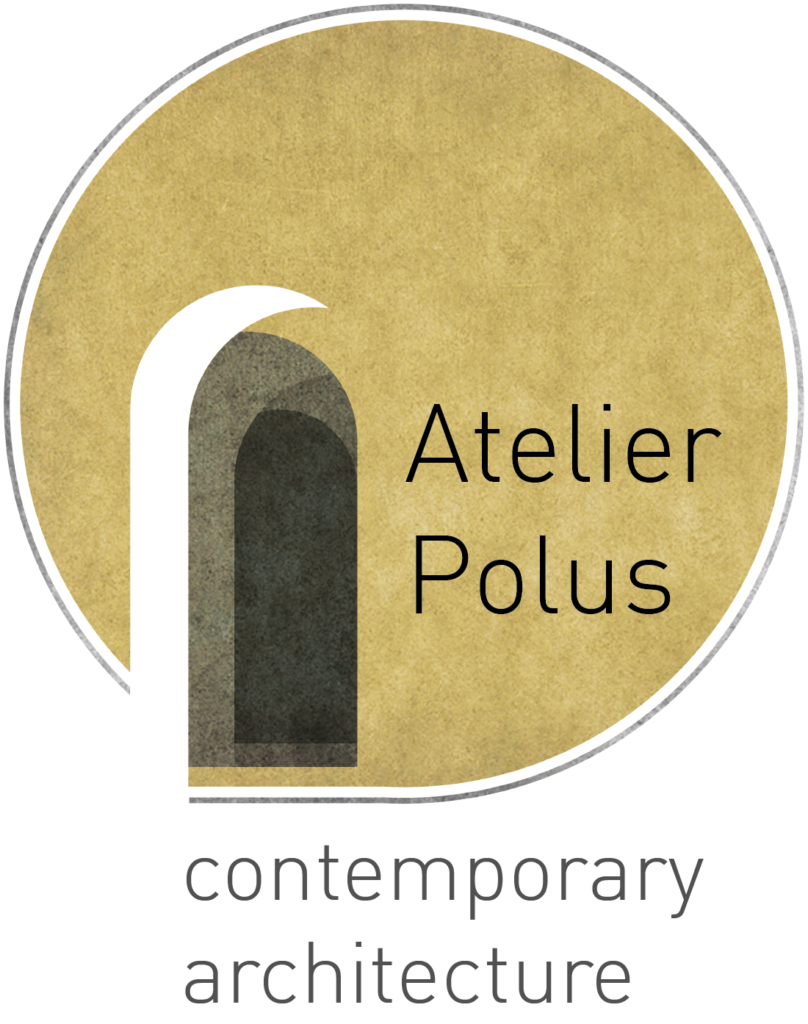
in conversation with the past and present:
de fenestra
architectural – research project
Defenestration
(from Modern Latin fenestra) is the act of throwing someone out of a window. The term was coined around the time of an incident in Prague Castle in the year 1618 which became the spark that started the Thirty Years’ War. This was done in “good Bohemian style”, referring to the defenestration which had occurred in Prague’s City Hall almost 200 years earlier (July 1419), which also on that occasion led to the Hussite war. The word comes from the New Latin de- (down from) and fenestra (window or opening).
By extension, the term is also used to describe the forcible or peremptory removal of an adversary.


deFenestra is a series of projects and studies, researching the forgotten layers of urban settlements.
The spaces we live in are always rising in historical and contemporary contexts, influenced by economical, political and sociological conditions. They are always the result of complicated compromises.
deFenestra concentrates on the morphology of cities, and researches the process of erasing parts of them from the collective memory.
The focus of deFenestra stays global.
In the book “L’architettura della città” (The Architecture of the City) published in 1966, the Italian architect Aldo Rossi explains the significance of “urban artifacts”, narrating the story of the Palazzo della Regione in Padua. Through this example, he elucidates the complexity of cities and the processes that have shaped them over centuries. Ultimately, Rossi emphasizes the importance of specific buildings for the memory and social consciousness of the city’s residents.
The Palazzo della Regione in Padua has undergone changes in its form and functionality over centuries, gradually gaining importance and becoming a central landmark—a symbol of the city and a witness to its history. Thus, it stands as one of the key structures defining what we understand as a city.
The Palazzo della Regione in Padua serves as an inspirational precedent. At deFenestra, our mission is to embark on a journey of exploration, research, and understanding—delving into the intricate processes that mold cities. Through a series of innovative projects and interventions, we aspire to extend beyond the conventional approaches, redefining the role of architects in shaping urban landscapes.

